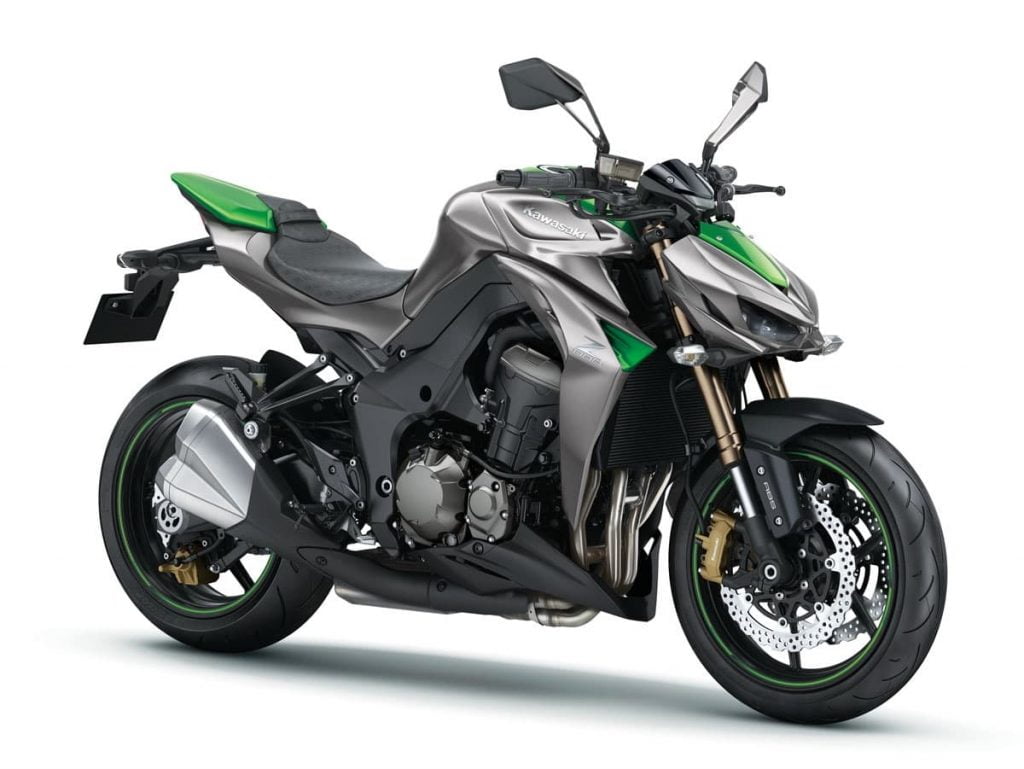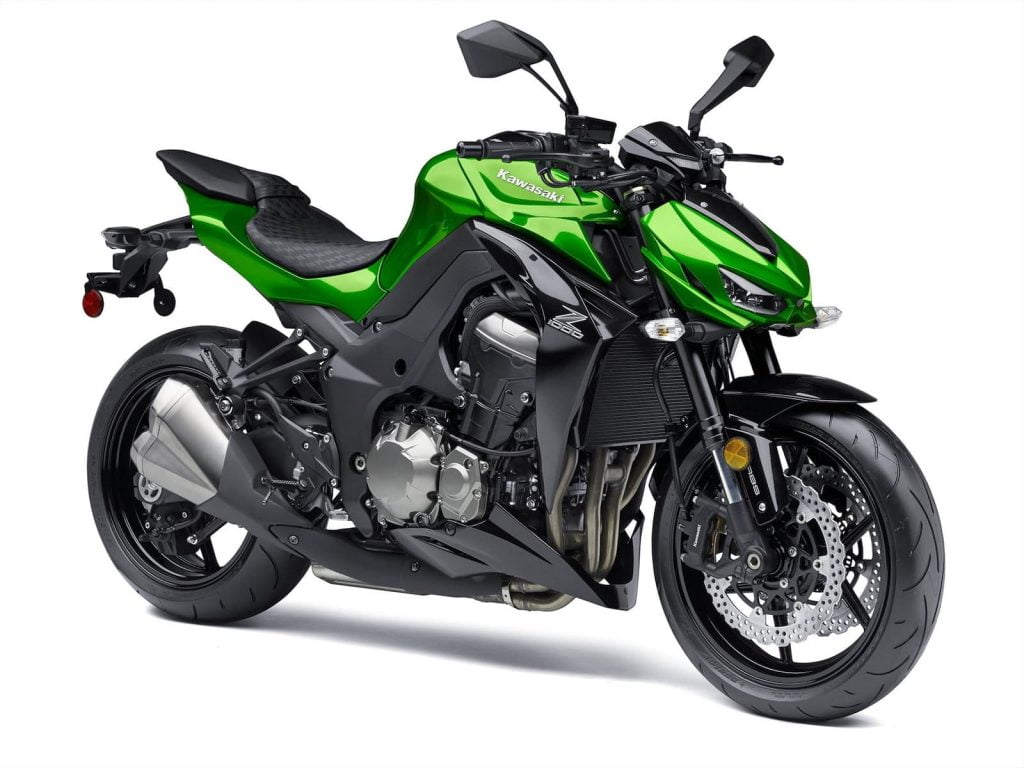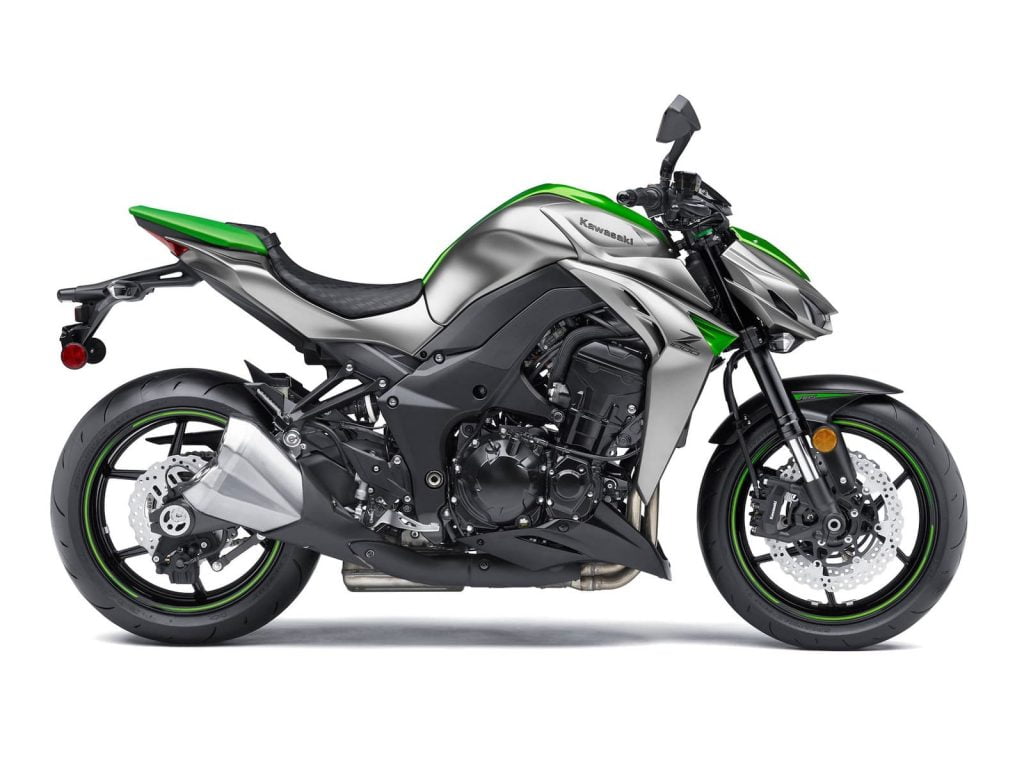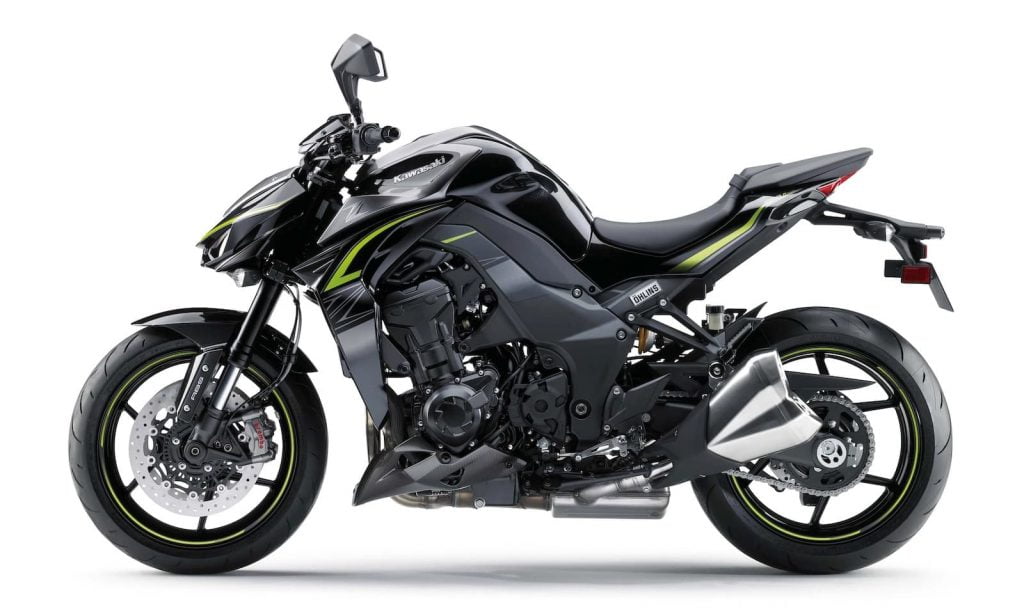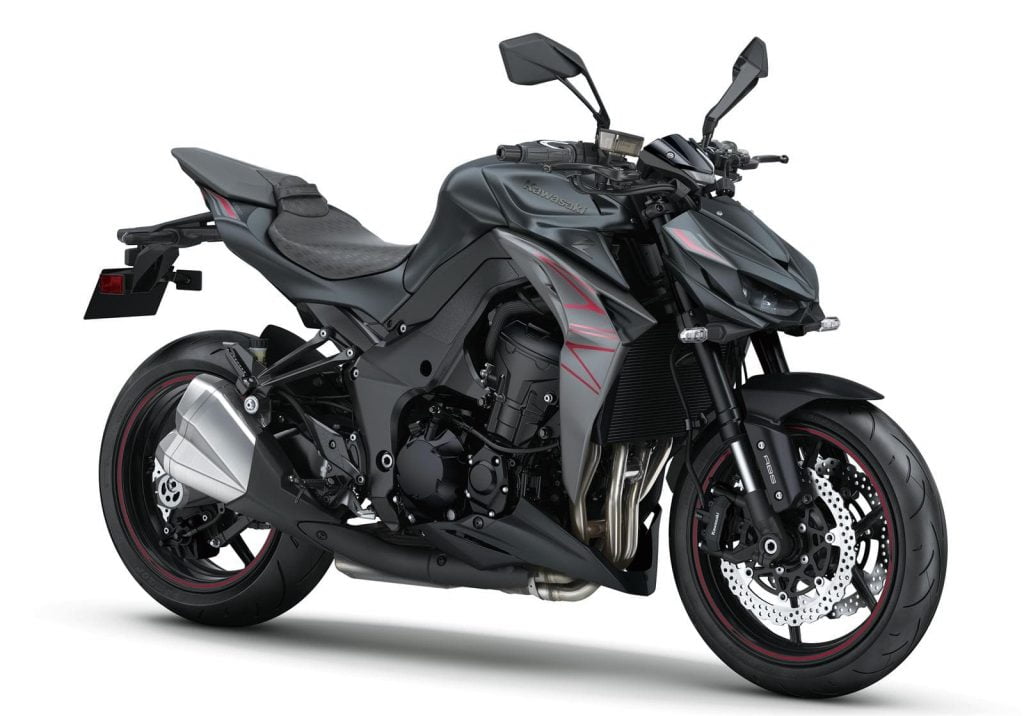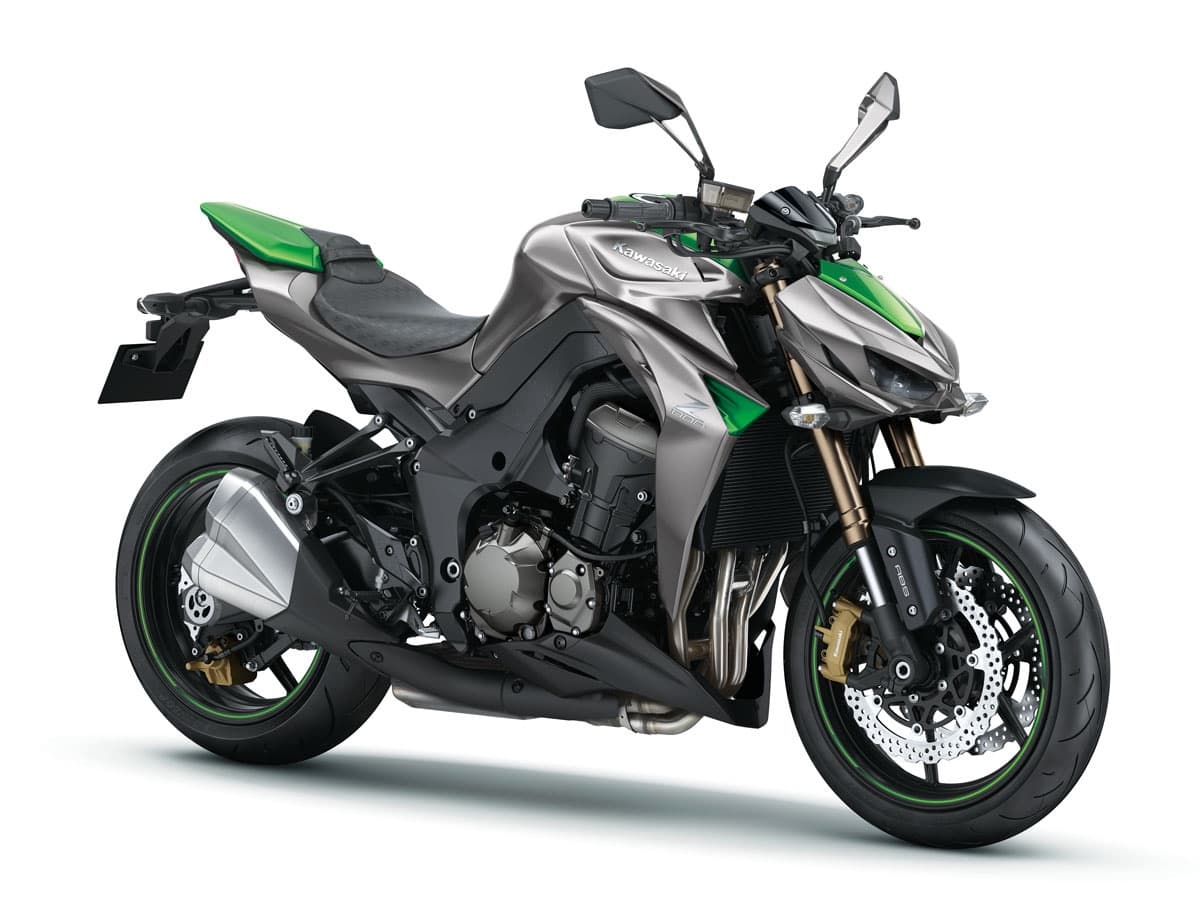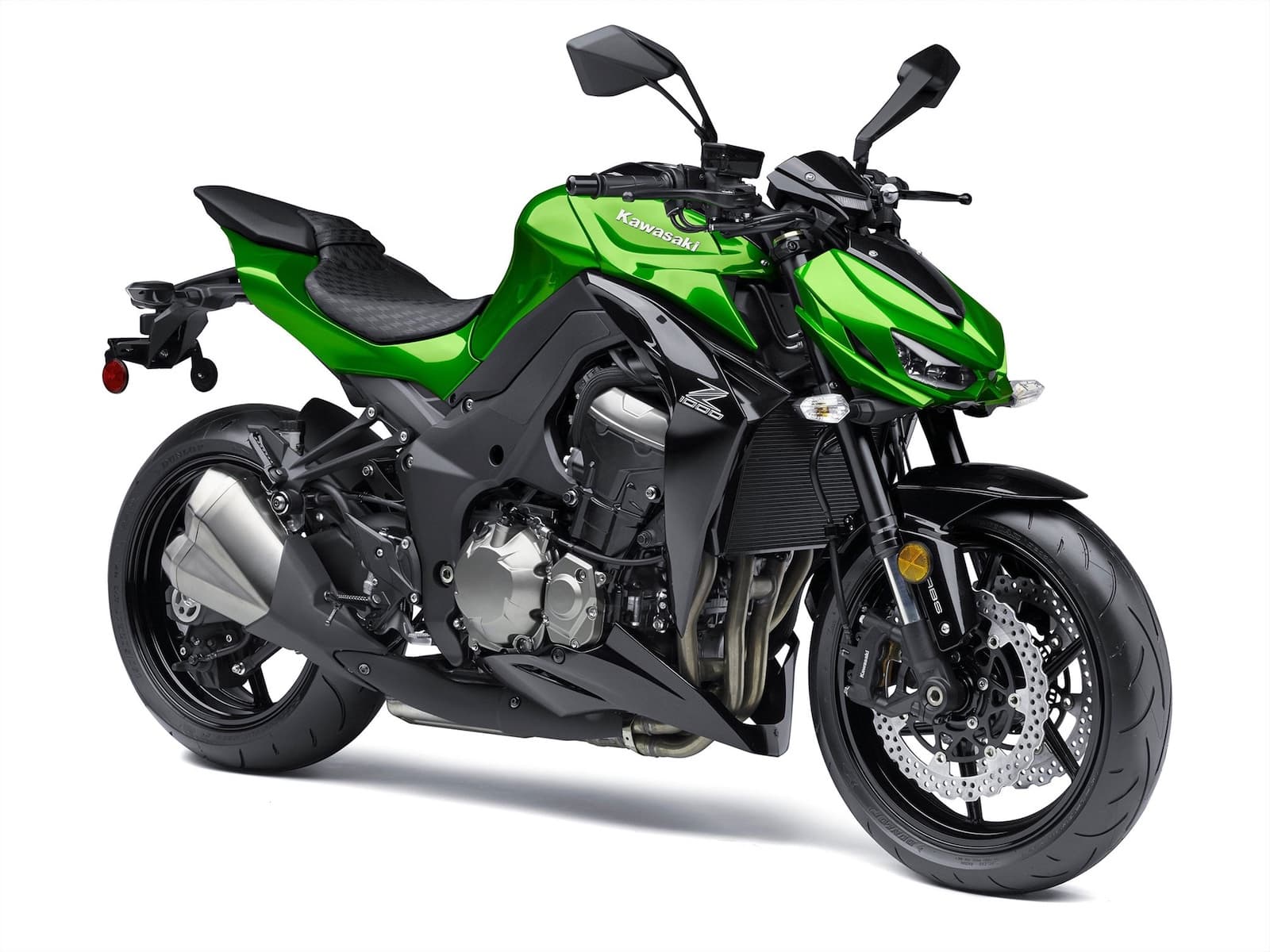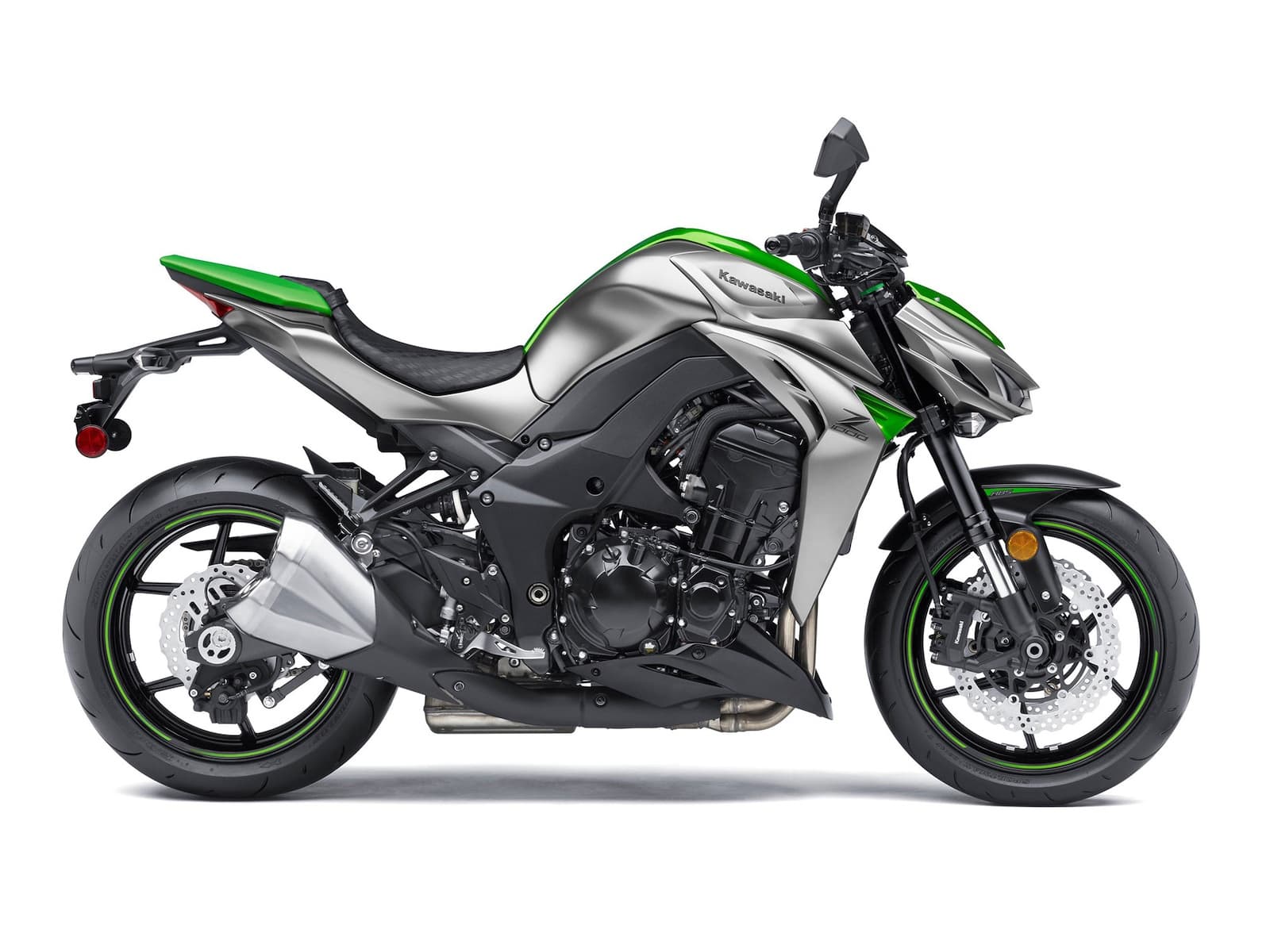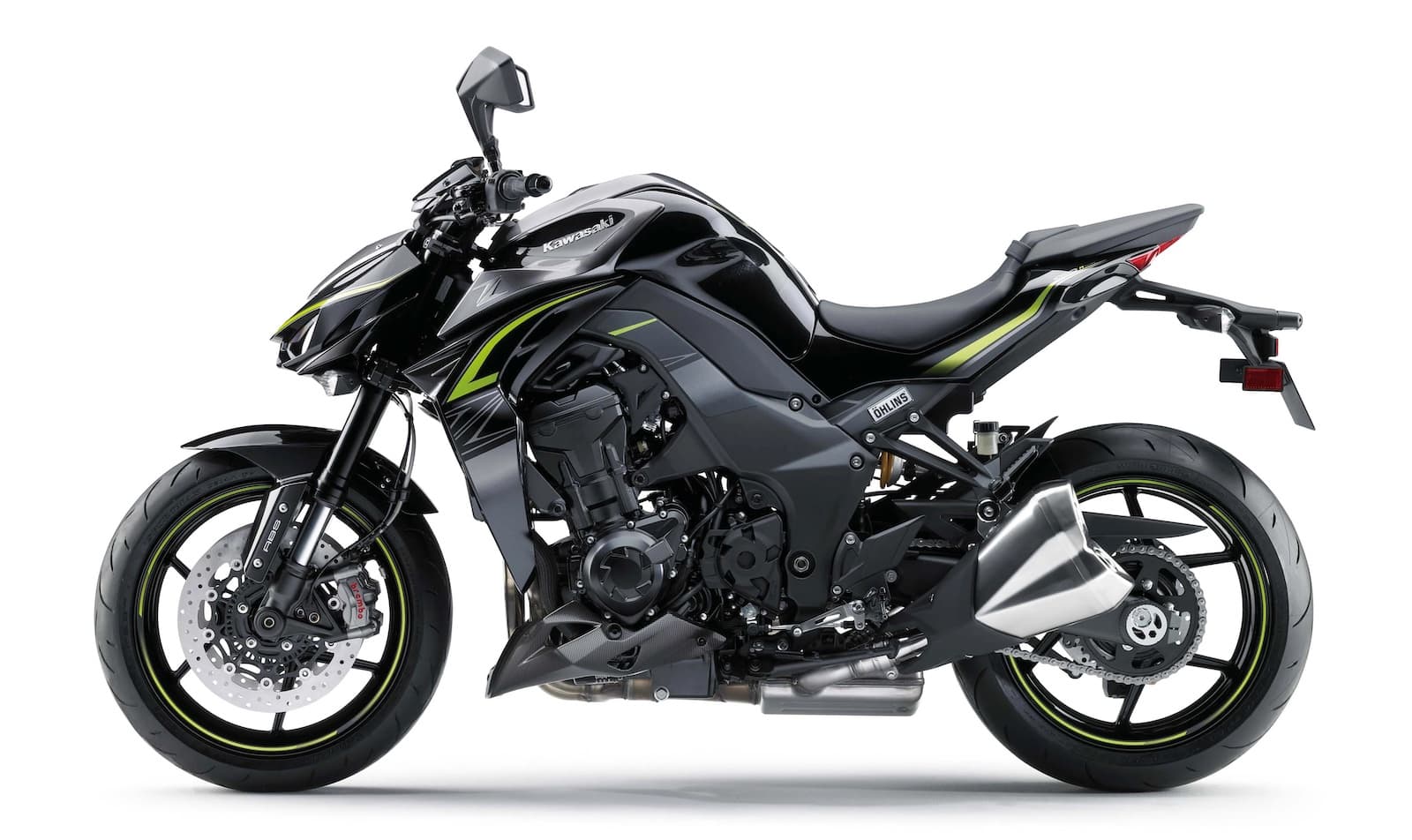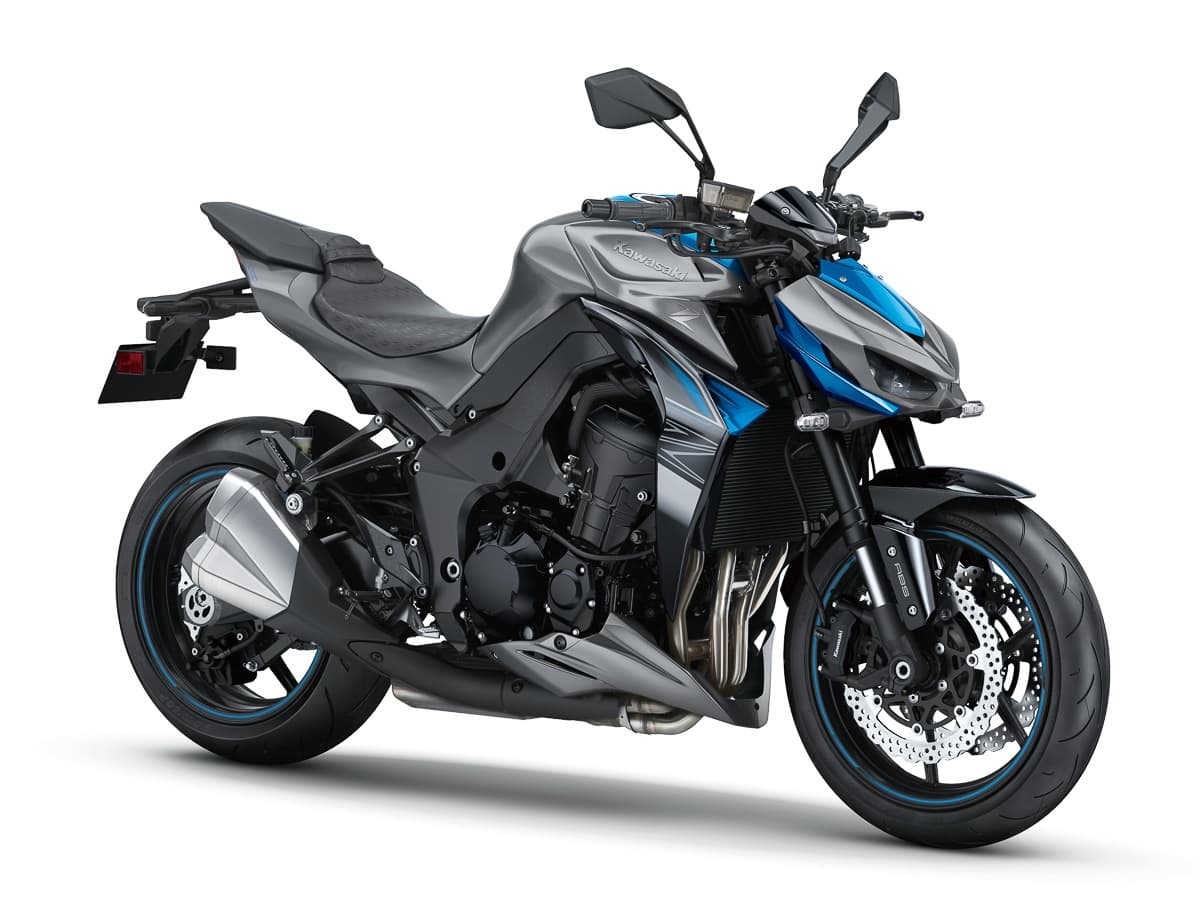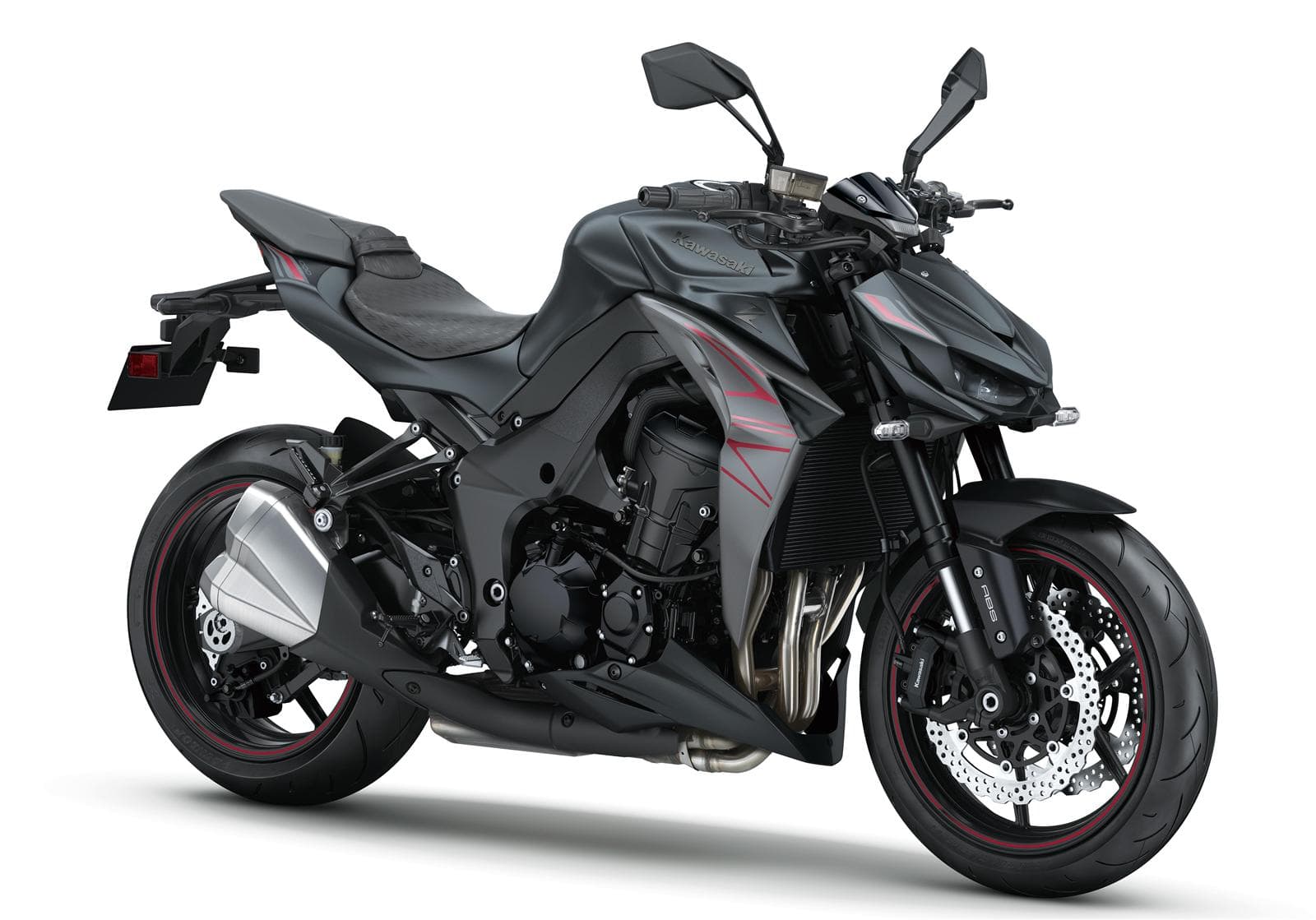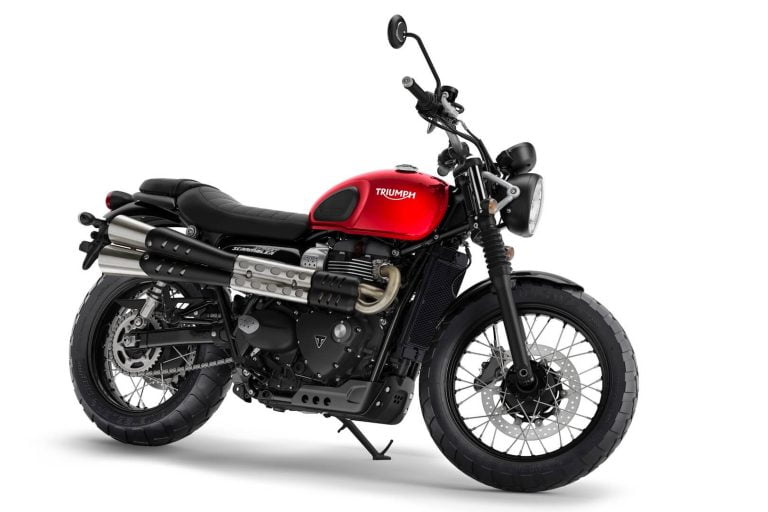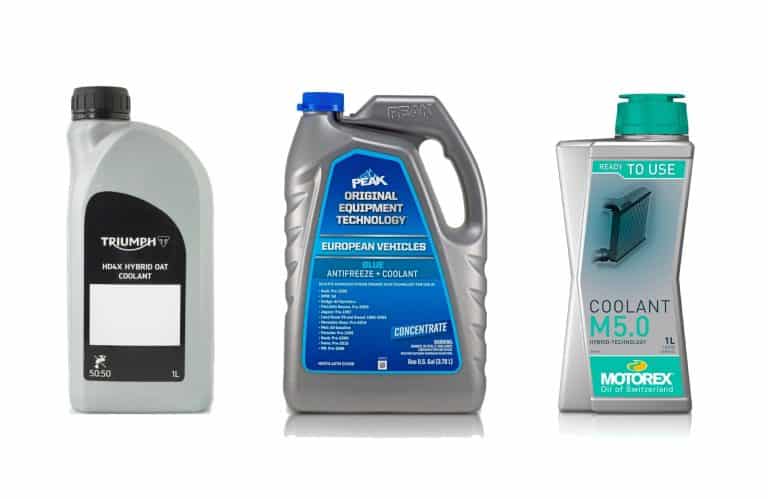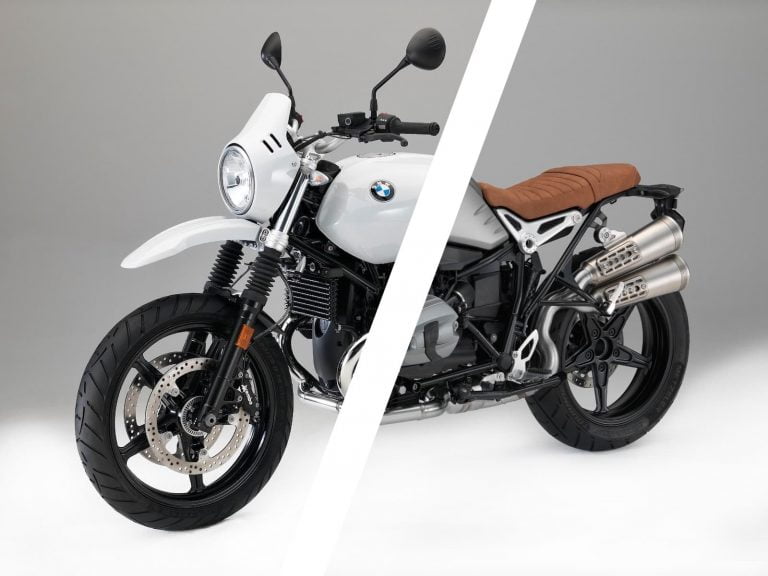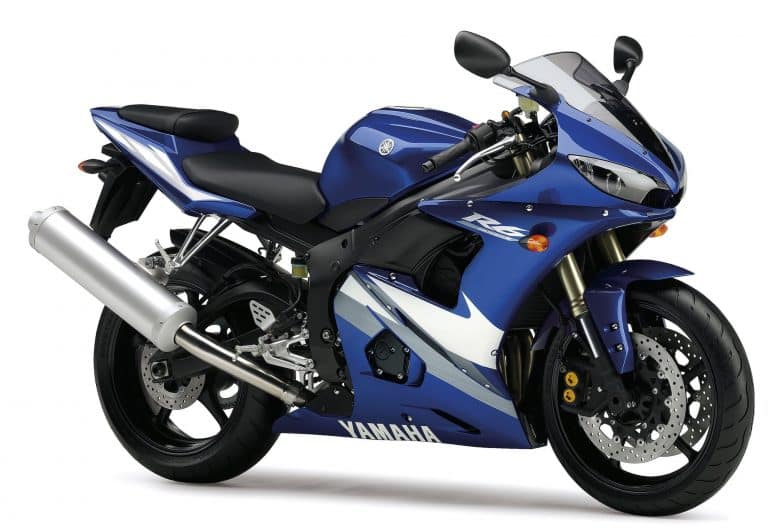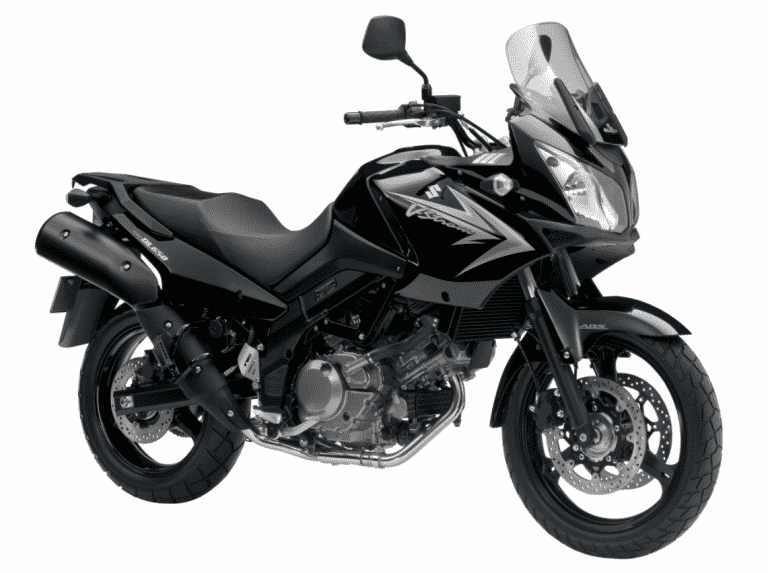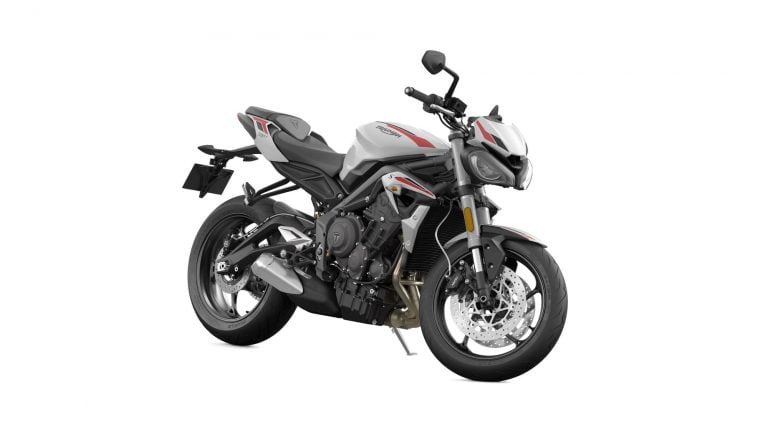Kawasaki Z1000 Gen 4 (2014-present) Maintenance Schedule and Service Intervals
This is the maintenance schedule with associated service intervals for the Kawasaki Z1000 Gen 4, made from 2014 onward (or 2014-2017 in the US).
The Kawasaki Z1000 is a four-cylinder standard sportbike, part of a model range that Kawasaki first launched in 2003.
The original Z1000 was a “Naked” ZX-9R in 2003 with streetfighter or standard styling. It used a modified engine from the ZX-9R. But from 2010 onward, Kawasaki increased the displacement to 1043cc.
Kawasaki uses a larger engine displacement for its naked bikes than its superbikes. This is Kawasaki’s way of making sure there’s enough mid-range torque to compensate for the top-end power loss compared to the superbikes that are in roughly the same displacement class (liter-ish).
Kawasaki gave the a style and parts upgrade in 2014 from the 2010-2013 spec. See below for a general intro to generations of the Z1000.
In the US, the Kawasaki Z1000 Gen 4 was only sold until 2017. Since 2017 it was been replaced in Kawasaki’s line-up by the Kawasaki Z900, which is now in its second generation.
This site has links for things like oil and spark plugs from which we earn a commission (which unfortunately nobody can save, not even us). If you appreciate this work, then please use those links. Thanks!
Kawasaki XXX Service Intervals
The fourth-generation Kawasaki Z1000 has oil change service intervals of 7600 miles or 12000 km. At each of these services, do a full check for the lubrication, general condition, and smooth operation of moving parts.
Kawasaki actually prescribes more frequent service, but most of the services between oil changes is for safety equipment, e.g. checking brake pads, fluid levels, and so on.
The valve service interval is 15200 miles or 24000 km.
Since the Z1000 has a liquid-cooled engine, make sure you keep the liquid coolant fresh.
Generations of the Kawasaki Z1000
The Kawasaki Z1000 has been built in four distinct generations, with style, the engine, chassis items, and technology updating constantly.
The styling evolved with each generation, but largely they had the same streetfighter design — not trying to be retro, but just 100% a fast-looking bike.
| Spec | Gen 1 Z1000 | Gen 2 Z1000 | Gen 3 Z1000 | Gen 4 Z1000 |
|---|---|---|---|---|
| Years | 2003-2006 | 2007-2009 | 2010-2013 | 2014+ |
| Engine | 953cc (Based on ZX-9R) | 953cc | 1,043cc (all-new) | 1,043cc |
| Suspension | 41mm inverted cartridge | 41mm inverted cartridge | 41mm inverted cartridge | Showa 41mm SFF-BP |
| Front brakes | 300mm discs, 4-piston calipers | 300mm petal-style rotors, 4-piston radial calipers | 300mm petal-style rotors, 4-piston radial calipers | 310mm petal-style, 4-piston monoblock |
What you need to service the Kawasaki Z1000 4th gen
Being a naked roadster, servicing the Kawasaki Z1000 isn’t as intimidating as on a bike where you have to pull off all the bodywork.
Apart from basic motorcycle maintenance tools, here’s what you need to service the Kawasaki Z1000 4th gen.
| Part | Kawasaki Z1000 Gen 4 Spec |
|---|---|
| Oil | You need 4.0L (4.2 US qt) of SAE 10W-40 engine oil “with API SG, SH, SJ, SL or SM with JASO MA, MA1 or MA2 rating”, e.g. Kawasaki 10W-40 Engine Oil or a high-spec oil like Motul 7100.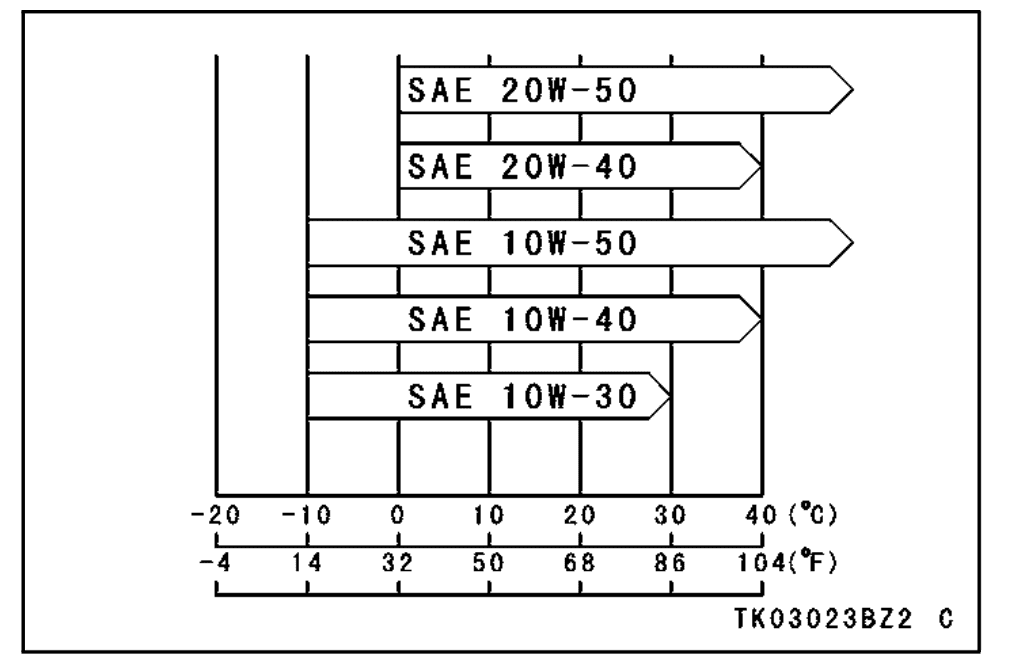 Don’t over-torque the drain bolt (spec is 29 Nm/21 lb-ft per the manual) — use a torque wrench if you don’t have experience with how much torque is enough. |
| Oil filter | Oil filter is part 16097-0008, or you can use Hiflofiltro HF303. Torque for oil filter is 17 Nm (13 ft-lb) (which basically means “don’t over-tighten”). |
| Front brake pads | Get double-sintered EBC brake pads for better bite and wear — code FA379HH (same all years so far). |
| Rear brake pads | Get double-sintered EBC brake pads for better bite and wear — code FA192HH (all years). |
| Spark plugs | NGK CR9EIA-9, with a spark plug gap of 0.8-0.9mm (use a spark plug gapping tool), torqued to 13 Nm or 9 ft-lb (use a torque wrench) |
| Air filter | Easiest is the drop-in replacement of the HifloFiltro part HFA2920. |
| Cable lubricant | Remember to lubricate your clutch cable (and brake cables if you have them) with a cable lubricant. Protect All Cable Life is a good general-purpose lubricant. |
| Chain lubricant | The chain needs to be lubricated every 600 km/400 miles (or more, if it gets wet/dirty). Motul chain paste is cheap and well-loved. |
| Brake fluid | Spec is to use DOT-4 brake fluid, e.g. Castrol DOT 4. |
| Coolant | Use 2.9L (about 3.1 US qt) of “soft water and ethylene glycol plus corrosion and rust inhibitor chemicals for aluminum engines and radiators”, e.g. Honda Coolant |
| Grease | Use a lithium soap based grease for all the important greasing points. |
Maintenance Schedule for Kawasaki Z1000 Gen 4
Below is the maintenance schedule for the Kawasaki Z1000 Gen 4.
The following is the list of maintenance operations and to be done on this motorcycle with a time or distance interval — whichever comes earlier.
Notes:
- I = Inspect
- R = Replace
- L = Lubricate
| km x 1000 | 1 | 6 | 12 | 18 | 24 | |
|---|---|---|---|---|---|---|
| mi x 1000 | 0.6 | 3.8 | 7.6 | 11.4 | 15.2 | Every |
| Engine oil and oil filter — Replace (Motul 7100, HF303RC) | R | R | R | Year | ||
| Air cleaner element — Part HFA2920 | R | More often if riding aggressively | ||||
| Spark plug (NGK CR9EIA-9) | R | R | ||||
| Valve clearance | I | |||||
| Idle speed | I | I | I | |||
| Throttle control system — Inspect (play, smooth return, no drag) | I | I | I | Year | ||
| Engine vacuum synchronization | I | I | ||||
| Fuel system — Inspect for leaks, condition | I | I | I | Year | ||
| Fuel hoses — Replace | 5 years | |||||
| Evaporative emission control system (if fitted) | I | I | I | I | I | |
| Coolant level | I | I | I | |||
| Cooling system — Inspect for leaks, condition | I | I | I | Year | ||
| Coolant, water hoses, and O-rings — Replace | 3 years / 36K km (22.5K mi) | |||||
| Air suction system | I | I | ||||
| Clutch operation (play, engagement, disengagement) | I | I | I | |||
| Tire air pressure — Inspect | I | I | Year | |||
| Wheels and tires — Inspect | I | I | Year | |||
| Wheel bearing damage — Inspect | I | I | Year | |||
| Drive chain lubrication condition — Inspect (Motul chain paste) | 600 km (400 mi) | |||||
| Drive chain slack — Inspect | 1000 km (600 mi) | |||||
| Drive chain wear — Inspect | I | I | More often if riding aggressively | |||
| Drive chain guide wear | I | I | ||||
| Brake system — Inspect | I | I | I | I | I | Year |
| Brake operation — Inspect (effectiveness, play, no drag) | I | I | I | I | I | Year |
| Brake fluid level — Inspect | I | I | I | I | I | 6 months |
| Brake fluid (front and rear) — Replace (DOT 4) | R | 2 years | ||||
| Brake hose/ Rubber parts of brake master cylinder and caliper — Replace | 48K km (30K mi) | |||||
| Brake pad wear — Inspect | I | I | I | I | ||
| Brake light switch operation | I | I | I | I | I | |
| Suspension system — Inspect | I | I | Year | |||
| Steering play — Inspect | I | I | I | Year | ||
| Steering stem bearings — Lubricate | L | 2 years | ||||
| Electrical system — Inspect | I | I | Year | |||
| Chassis parts — Lubricate | L | L | Year | |||
| Condition of bolts, nuts, and fasteners | I | I | I |
Tyre size and tyre pressure for the Kawasaki Z1000 Gen 4
The Kawasaki Z1000 has tubeless tyres. The manual specifies these tyre sizes and tyre pressures as standard.
The Z1000 shipped with Dunlop D214 tyres, which are fairly generic street tyres.
| Tyre | Size | Tyre pressure |
|---|---|---|
| Front | 120/70 ZR17 M/C (58W) | 250 kPa/36 psi |
| Rear | 190/50 ZR17 M/C (73W) | 290 kPa/42 psi |
About the Kawasaki Z1000 (4th gen)
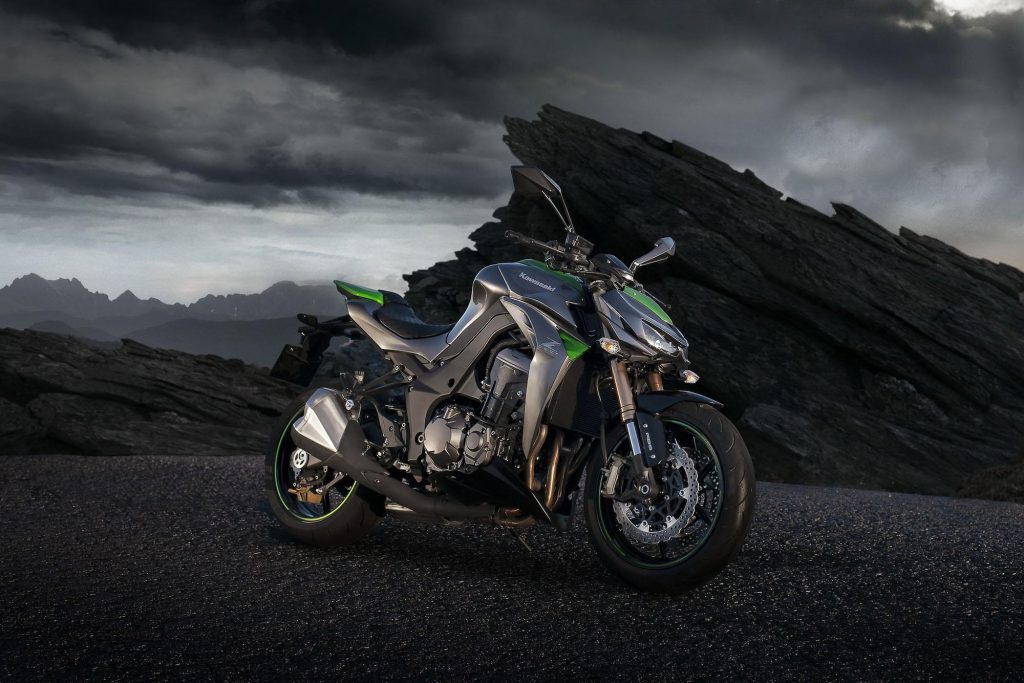
The Kawasaki Z1000 Gen 4 is the latest in a series of full-size street sport bikes from Kawasaki, one of the pioneers of the “streetfighter” segment.
Like its predecessors (and many other Kawasaki Z bikes), the Z1000 has a liquid-cooled inline-four engine that has ample power at all rpm levels, which gives effortless acceleration in almost any situation. Twist the throttle in fourth gear at 15 mph / 20 km/h and it will just comply.
Like previous iterations of the Z1000, the 2014+ Z1000 Gen 4 has an engine that has its bore and stroke both increased over the ZX-9R, giving it a capacity of 1043cc, which lets Kawasaki more easily tune it for more mid-range torque without sacrificing too much top-end power.
Because engineers aren’t as constrained as they are for litrebike motorcycles (which have to meet racing spec… if they’re ever raced), increasing capacity is a viable option.
The Kawasaki Z1000 plays in a tough crowd, competing against large-capacity sport bikes like the BMW S1000R, the Yamaha MT-10, and the Aprilia Tuono V4. But even though it’s hard to distinguish oneself in a crowd of litre-class sport bikes, Kawasaki does with a few distinctive features including
- Its uniquely aggressive “Sugomi” streetfighter styling
- The Show Separate Function Fork — Big Piston (SFF-BP), which give light weight, easy adjustability, and excellent control
- Short final drive gearing, giving ready response, coupled with a tall 6th gear for highway comfort
- A combined analogue and digital dash with a large tachometer
- And of course that higher capacity engine
Kawasaki’s Z1000 makes an impressive 140 hp (105 kW) at 10,000 rpm, with peak torque coming at a relatively low 7,300 rpm. Curb weight is 221 kg, which is light considering the power it puts out.
My personal favourite part of the Kawasaki Z1000 (as well as its sibling, the Ninja 1000) is the intake roar. It’s hard to make a stock bike sound great, and a rider can rarely hear the exhaust anyway. But that intake roar as revs climb is addictive!
The Z1000 Gen 4 was sold alongside the Kawasaki Z800, and later the Kawasaki Z900.
In the US, the Z900 ended up replacing the Z1000 as well as the Z800.
Manual for the Kawasaki Z1000 Gen 4
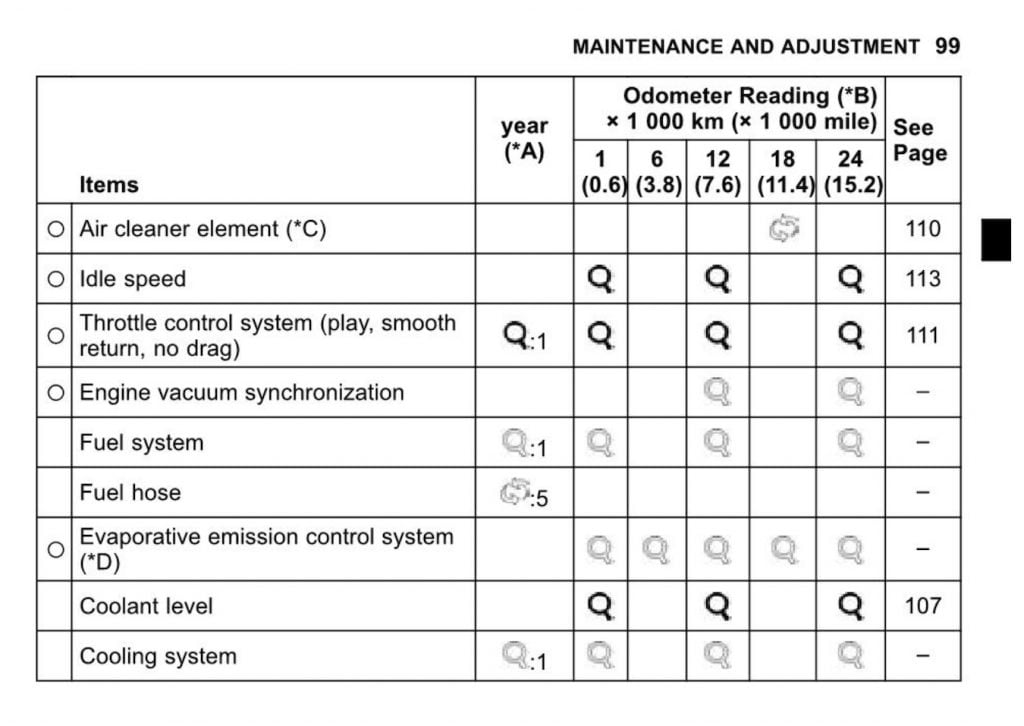
The above maintenance schedule comes directly from the user’s manual for the 2016 Kawasaki Z1000. You can access the manual from Kawasaki’s website here.
